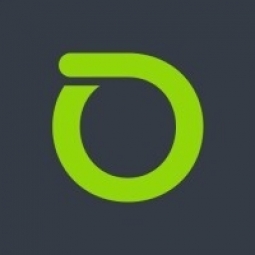公司规模
Large Corporate
地区
- America
国家
- United States
产品
- nGeniusONE
技术栈
- Adaptive Service Intelligence
- InfiniStream appliances
实施规模
- Enterprise-wide Deployment
影响指标
- Customer Satisfaction
- Productivity Improvements
技术
- 分析与建模 - 实时分析
适用行业
- 医疗保健和医院
适用功能
- 质量保证
用例
- 远程资产管理
服务
- 系统集成
关于客户
客户是一家拥有百年历史的医疗保险提供商,总部位于美国西北部。该公司为多个州的数百万会员提供服务,提供预防性护理以及影响健康的疾病治疗。该公司拥有重要的 IT 基础设施,支持其运营,包括处理患者资格查询。这些查询对公司的运营至关重要,因为它们决定了处方治疗是否在保险范围内。此过程中的任何放缓都可能对患者护理产生重大影响,也可能使保险公司面临违反服务水平协议 (SLA) 的风险。
挑战
这家医疗保险提供商的网络速度严重下降,对用于患者资格查询的应用服务产生了不利影响。这些网络速度下降导致医生和医院无法确定处方治疗是否在保险范围内。这不仅影响了患者护理,还使保险公司面临违反服务水平协议 (SLA) 的风险。IT 团队面临的挑战是找出这些网络速度下降的根本原因,以便快速分类并缩短平均修复时间 (MTTR)。
解决方案
为了解决网络和应用程序问题,该保险公司的 IT 团队与长期技术合作伙伴 NETSCOUT™ 合作,以查明基础设施速度变慢的根本原因。他们使用了 nGeniusONE™ 服务保证平台、自适应服务智能™ (ASI) 技术和 InfiniStream® 设备。这些工具提供了关键的基于流量的情报,可了解主要和次要数据中心位置以及当前正在上线的新共置位置的服务性能。使用 nGeniusONE,IT 人员能够了解整个付款人环境,从互联网连接和防火墙到应用程序服务器再到数据库和存储。这使 IT 能够分类和排除影响医生和医院通信的问题,以请求患者治疗批准和服务特权。
运营影响

Case Study missing?
Start adding your own!
Register with your work email and create a new case study profile for your business.
相关案例.

Case Study
Hospital Inventory Management
The hospital supply chain team is responsible for ensuring that the right medical supplies are readily available to clinicians when and where needed, and to do so in the most efficient manner possible. However, many of the systems and processes in use at the cancer center for supply chain management were not best suited to support these goals. Barcoding technology, a commonly used method for inventory management of medical supplies, is labor intensive, time consuming, does not provide real-time visibility into inventory levels and can be prone to error. Consequently, the lack of accurate and real-time visibility into inventory levels across multiple supply rooms in multiple hospital facilities creates additional inefficiency in the system causing over-ordering, hoarding, and wasted supplies. Other sources of waste and cost were also identified as candidates for improvement. Existing systems and processes did not provide adequate security for high-cost inventory within the hospital, which was another driver of cost. A lack of visibility into expiration dates for supplies resulted in supplies being wasted due to past expiry dates. Storage of supplies was also a key consideration given the location of the cancer center’s facilities in a dense urban setting, where space is always at a premium. In order to address the challenges outlined above, the hospital sought a solution that would provide real-time inventory information with high levels of accuracy, reduce the level of manual effort required and enable data driven decision making to ensure that the right supplies were readily available to clinicians in the right location at the right time.

Case Study
Gas Pipeline Monitoring System for Hospitals
This system integrator focuses on providing centralized gas pipeline monitoring systems for hospitals. The service they provide makes it possible for hospitals to reduce both maintenance and labor costs. Since hospitals may not have an existing network suitable for this type of system, GPRS communication provides an easy and ready-to-use solution for remote, distributed monitoring systems System Requirements - GPRS communication - Seamless connection with SCADA software - Simple, front-end control capability - Expandable I/O channels - Combine AI, DI, and DO channels

Case Study
Driving Digital Transformations for Vitro Diagnostic Medical Devices
Diagnostic devices play a vital role in helping to improve healthcare delivery. In fact, an estimated 60 percent of the world’s medical decisions are made with support from in vitrodiagnostics (IVD) solutions, such as those provided by Roche Diagnostics, an industry leader. As the demand for medical diagnostic services grows rapidly in hospitals and clinics across China, so does the market for IVD solutions. In addition, the typically high cost of these diagnostic devices means that comprehensive post-sales services are needed. Wanteed to improve three portions of thr IVD:1. Remotely monitor and manage IVD devices as fixed assets.2. Optimizing device availability with predictive maintenance.3. Recommending the best IVD solution for a customer’s needs.

Case Study
HaemoCloud Global Blood Management System
1) Deliver a connected digital product system to protect and increase the differentiated value of Haemonetics blood and plasma solutions. 2) Improve patient outcomes by increasing the efficiency of blood supply flows. 3) Navigate and satisfy a complex web of global regulatory compliance requirements. 4) Reduce costly and labor-intensive maintenance procedures.

Case Study
Cloud-based healthcare solution for Royal Philips
Royal Philips wanted to launch its cloud-based healthcare solution HealthSuite Digital Platform in China to deliver services to help cope with challenges related to urbanization and population growth. Philips wanted to achieve this goal by combining mobile, cloud computing and big data technologies. To bring this platform and product to market, Philips required cloud computing and local technical service capabilities in China, in addition to a flexible IT infrastructure that could handle user requests.








